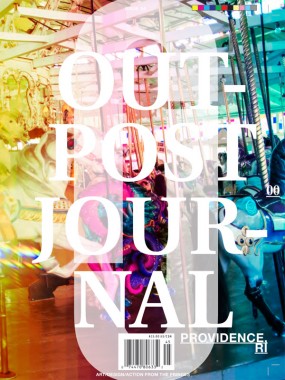
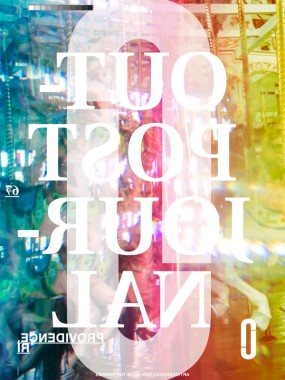
Outpost Journal 4, Providence
Softcover, 64 pp. + insert, offset 4/4, 9 x 12 inches
Edition of 500
ISBN 978-0-9836082-2-6
Published by Outpost Journal
$15.00 ·
Outpost is an annual print publication on art, design and community action from cities that have been traditionally underexposed beyond their local contexts. Each beautifully produced and visually engaging issue of Outpost focuses on a single urban location and comes packaged with a limited edition print by an artist from the featured city. Outpost is a journey into the creative heart of a place, and via features like “Secretly Famous” (profiles of the most infamous artsy locals), guerrilla engagements with tourist attractions, historical explorations, mapping projects, and deep dives into artist collectives and organizations, Outpost exposes the myriad ways in which unique local communities arise through creative collaboration and production.
Exploratory and playful, critical with a sense of levity, and inspired by hand-drawn maps, flags, totem poles, poorly pixelated iPhone photos, moody landscapes, and the spirit of adventure, Outpost is dedicated to strengthening ties between communities and spreading new ideas about how creative culture can change our world.
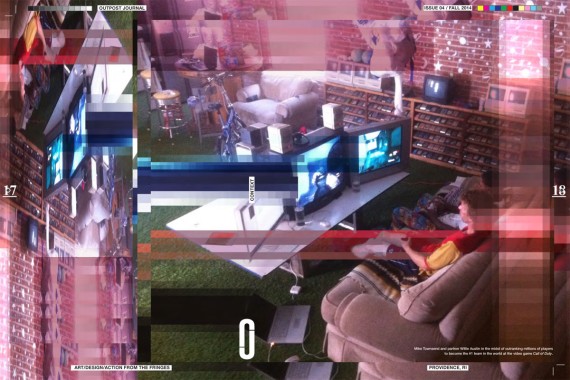
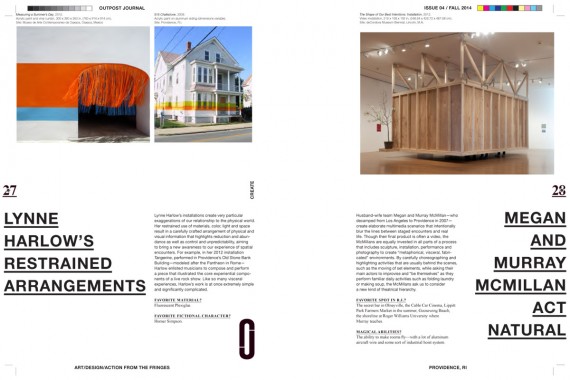
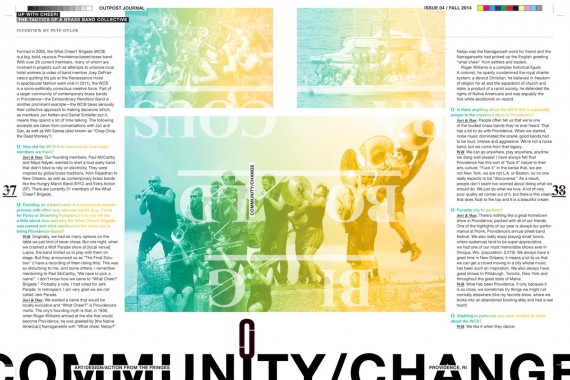
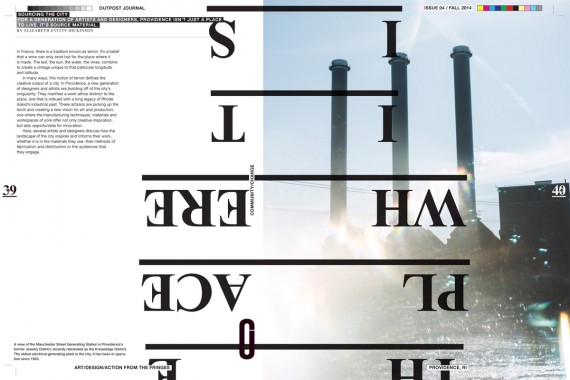
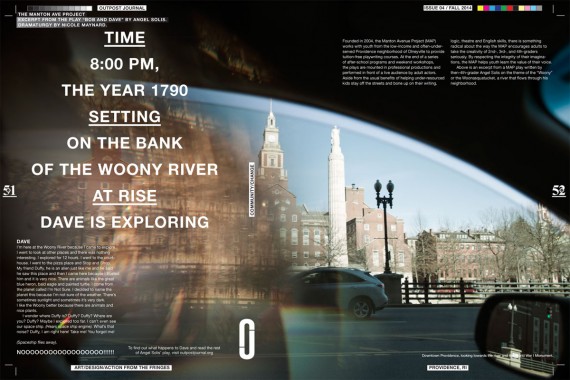
Aja Blanc, Alex Kwartler, Annie Fischer, Anusha Venkataraman, Architecture, Art, Brian Chippendale, Clay Rockefeller, Culture, Dale Gowen, Distribution, Elizabeth Evitts Dickinson, Eric Shiner, Jay Peter Salvas, Jungil Hong, Luke Baker, Manya Rubinstein, Matthew Williams, Mike Taylor, Outpost Journal, Pete Oyler, Sheri Pasquarella, Victoria Kung
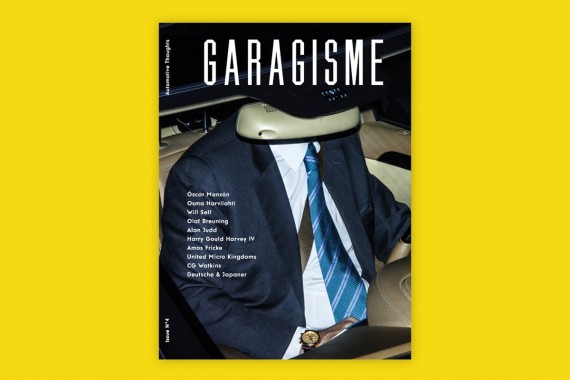
GARAGISME Magazine 4
Softcover, 144 pp., offset 4/4, 240 x 320 mm
English edition
ISBN 978-2-9540897-0-6
Published by GARAGISME Éditions
$16.00 ·
GARAGISME is a biannual publication documenting automobile culture / est une publication semestrielle documenter la culture automobile.
1. Oscar Monzón: KARMA
2. Monica Uszerowicz: Customized cars of Broward
3. Nicolas Poillot: Dancing with(out) fear
4. CG Watkins: Racing Dude
5. Romaric Tisserand: The night watch
6. Basile Mookherjee: One Thousand and One Nights
7. Luke & Nik: Coriolus Station
8. Jamie Wald Aldam: What do farmers get up to behindthe wheel
9. Sanam Gharagozlou: The Paykan abides
10. Will Self: Madness of Crowds Speed Awareness
11. Alan Judd: Spies’ Cars
12. Stephen Bayley: Albert Camus’ Crash
13. Monica Uscerowicz: United Micro Kingdoms
14. Aurélien Arbet: On the other side of the dune
15. Amos Fricke: Hemmelrath Lackfabrik GmbH, Klingenberg, Germany
16. Harry Gould Harvey IV: Mountain Pass
17. Deutsche & Japaner: Constellations
18. Osma Harvilahti: Arrangements
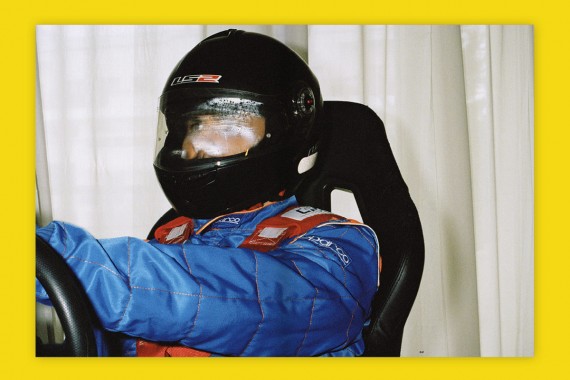
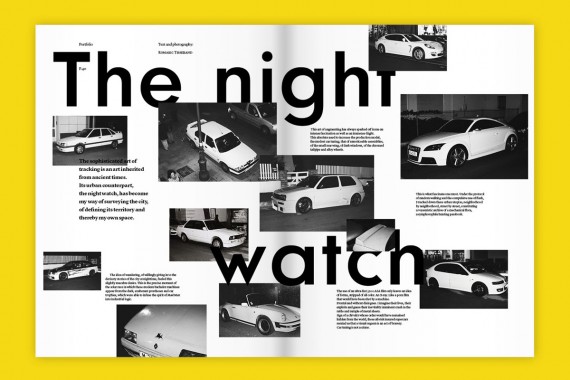
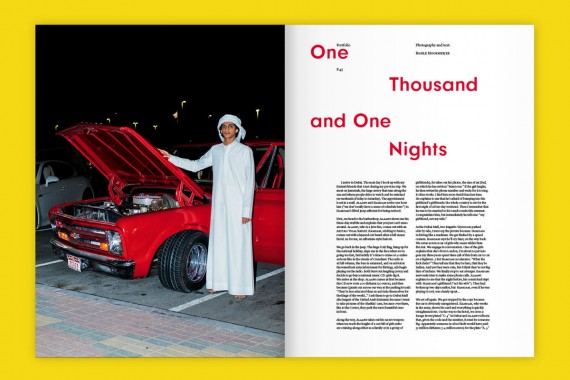
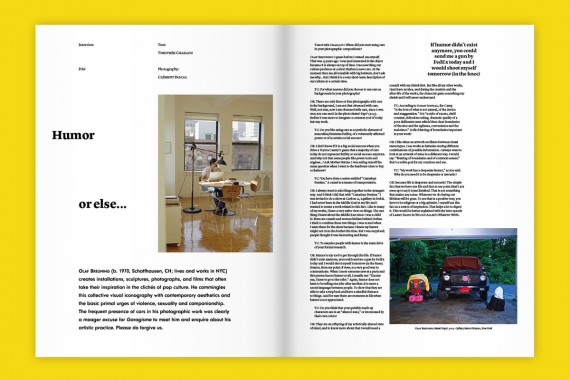
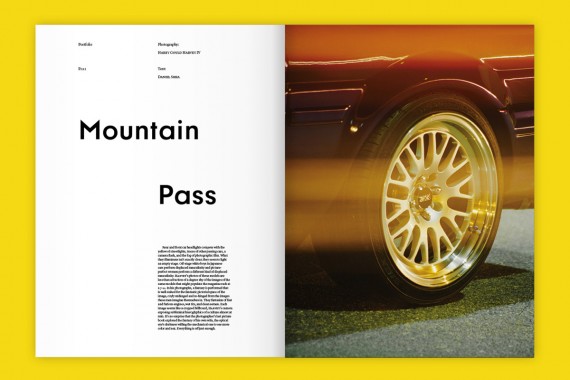
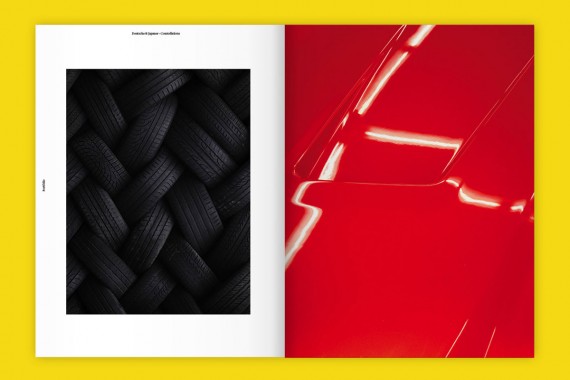
Alan Judd, Amos Fricke, Annie-Sophie Ferrari, Aurélien Arbet, Basile Mookherjee, Cars, CG Watkins, Culture, Distribution, Garage Grotesk, GARAGISME Éditions, Gilles Uzan, Harry Gould Harvey IV, Jamie Wald Aldam, Monica Uscerowicz, Monica Uszerowicz, Nicolas Poillot, Oscar Monzón, Osma Harvilahti, Romaric Tisserand, Sanam Gharagozlou, Stephen Bayley, Tania Feghali, Tiffany Thomas, Will Self
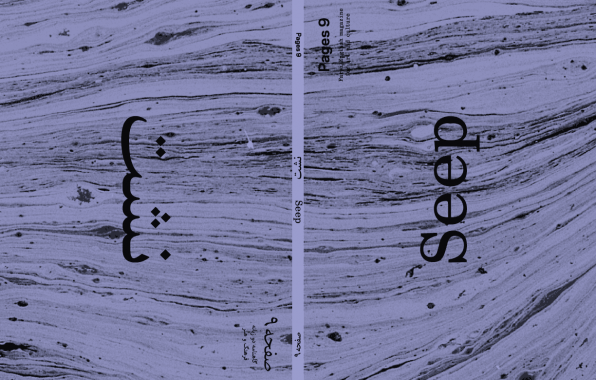
Pages 9, SEEP
Softcover, 129 pp., offset 1/1, 200 x 260 mm
English and Farsi
ISSN 1573-3165
ISBN 978-90-821190-0-8
Published by Pages
$18.00 ·
The biology or politics of seeping is like that of raw petroleum oozing at natural oil seeps. Unlike refined oil which has sponsored modernization and its aligned archives, crude oil pours beyond historical purpose and defies structural elevations – it instead disfigures the ground through which it dubiously spreads. This issue of Pages assumes ’seep’ as a post archival mode, where geography, culture and the body is approached through seepage, suspension, deviation and subtraction.
This issue contains contributions by Mariam Motamedi Fraser, Mark von Schlegell, Nima Parzham, Natasha Ginwala, Vivian Ziherl, Matts Leiderstam, Adam Kleinman, Suzanne Treister, Alexi Kukuljevic, Eugene Thacker and Saleh Najafi. Including in this issue are also reprinted materials, among others, correspondences between a filmmaker and the Anglo-Iranian Oil Company (former British Petroleum) around the making of a company film called “Persian Story” in 1951, and a 1977 newspaper article about Dennis Oppenheim’s involvement with a commissioned art work for the Tehran Museum of Contemporary Art.
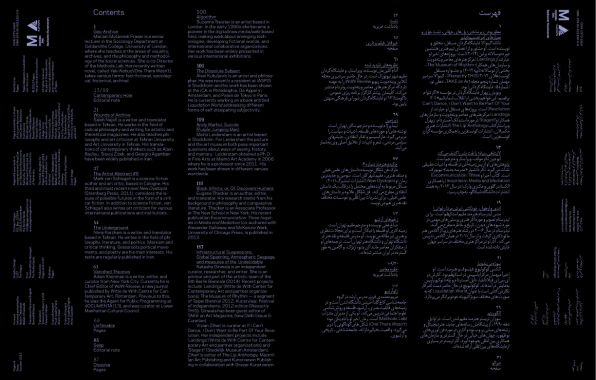
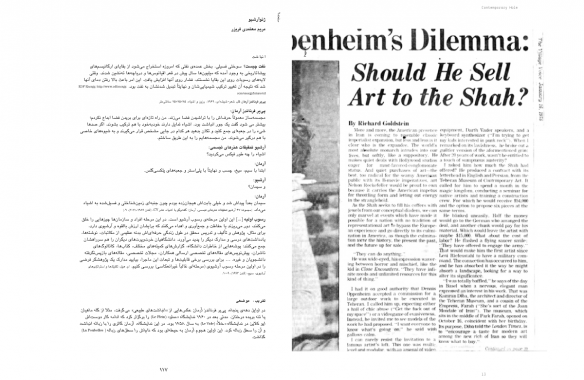
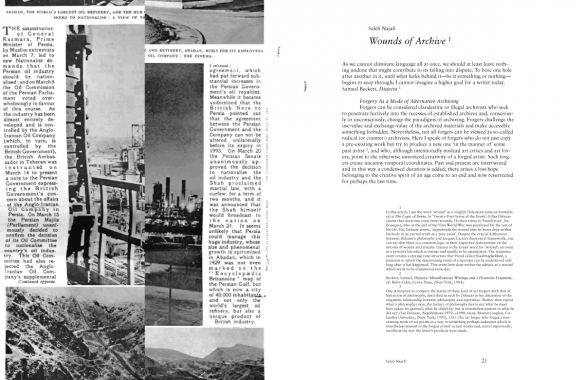
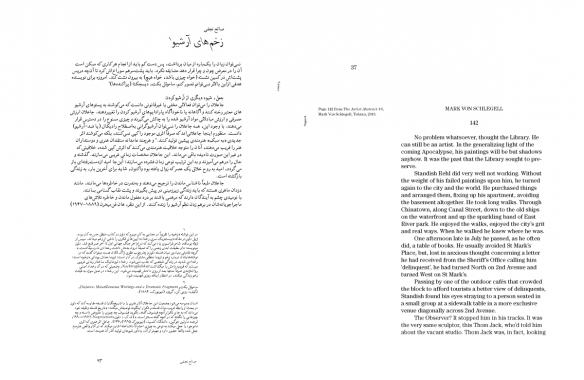
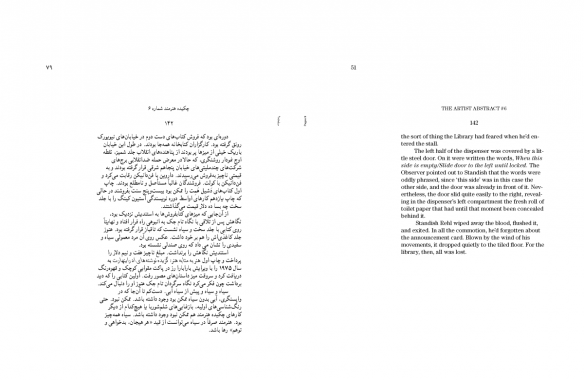
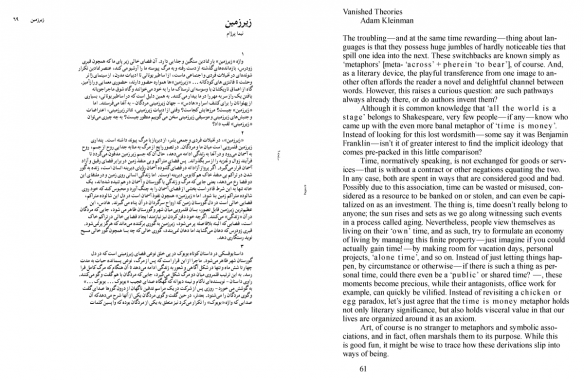
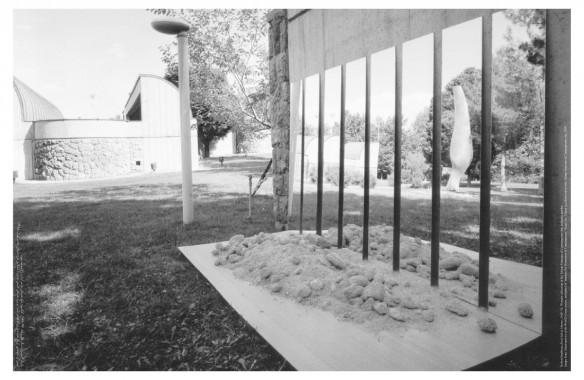
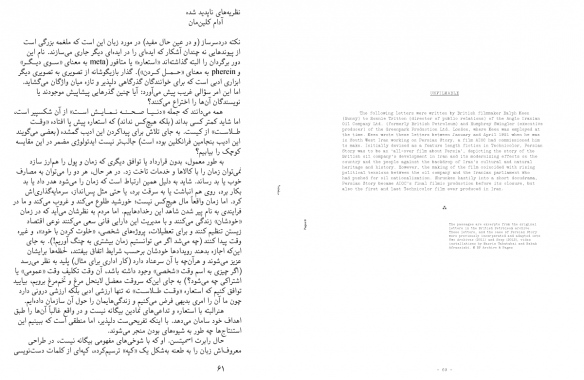
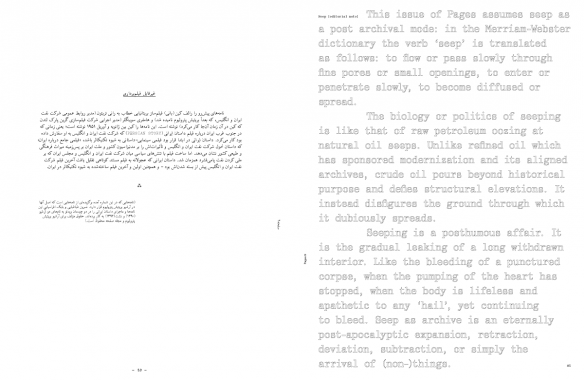
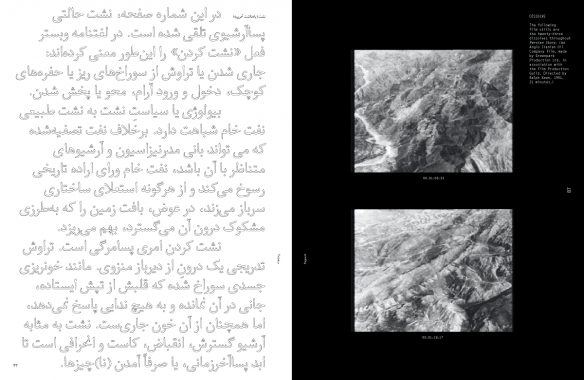
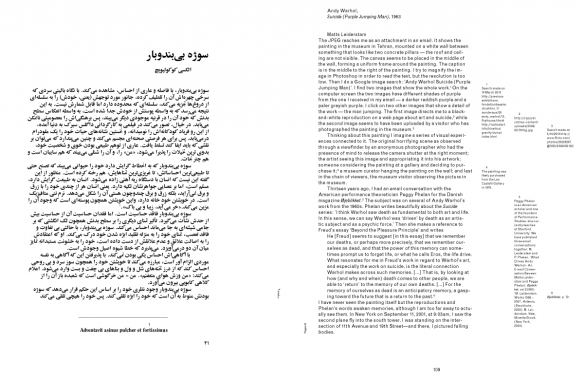
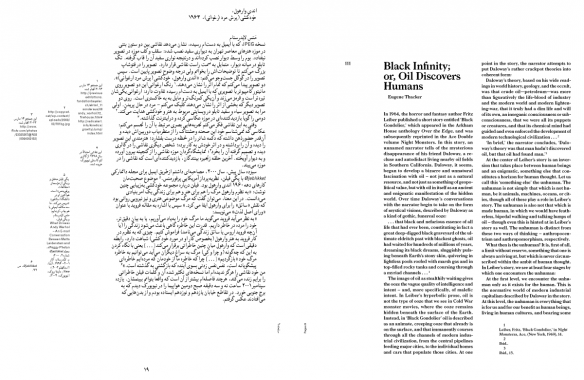
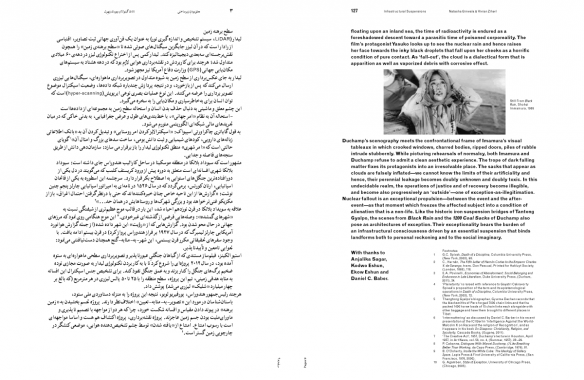
Adam Kleinman, Alexi Kukuljevic, Babak Afrassiabi, Distribution, Eugene Thacker, Iran, Magazines, Mariam Motamedi Fraser, Mark Von Schlegell, Matts Leiderstam, Nasrin Tabatabai, Natasha Ginwala, Nima Parzham, Pages, Saleh Najafi, Suzanne Treister, The Netherlands, Vivian Ziherl
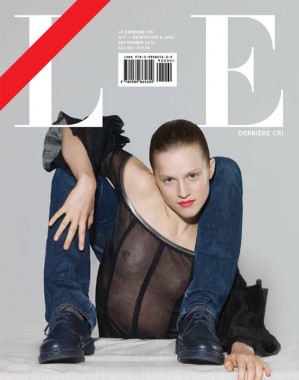
Le Derriére Cri 1, Repetition & Chic
Softcover, 200 pp., offset 4/4, 200 x 250 mm
Edition of 1000
ISBN 978-0-9898656-0-9
Published by Capricious
$24.90 ·
LDC revives the tradition of rigorous satire and critique within the theatre of fashion, photography, and contemporary culture.
Le Derrière Cri purposely strays from the classic magazine model of interviews, articles & reviews, instead using the vehicles of the editorial industry to subvert the image-making economy we so take for granted. Written by anonymous insiders, pseudonymous provocateurs, and authors attributed with academic precision, LDC’s contents include true stories, academic musings, works of complete fiction and blurry spaces in between. Visually, LDC draws upon the incestuous beauty of the fashion industry itself, resulting in works that nurture surrealism in its purest form.
For the premiere issue of Le Derrière Cri we examine the underpinnings of fashion through two thematically linked ideas: Repetition as one of fashion’s main devices to create newness, leading to the slippery and hyper-abundant term ‘Chic’.
Ukrainian photography duo SYNCHRODOGS goes derrière-mad with Chic Asses, followed by a series of confessional articles: first an exploration of the magazine’s rather contentious title (L.E.D.E.R.R.I.E.R.E.C.R.I.), next a bemused study of a sycophantic fashion assistant and a tell-all of the perils of being a Fashion Triennale director, as BENI BISCHOF’s defaced fashion ads punctuate and estrange the editorial flow one sausage at a time. MICHAEL ROCK and ELIZABETH ROCK trace IntelliChic, the blockbuster campaign that was never meant to be. Photographer LAUREN LANCASTER capitalizes on a 300% credit to all-star minimalist designer JIL SANDER, followed up by a gruesome wedding story by a well-known stylist featuring the same sartorial centerpiece. Artist ANICKA YI investigates the noosphere of global scent horizons with AARON MCELROY’s lurid floral portraits. QIU YANG undresses a Lynchian centerfold in a 26-page story entitled Chic-At-Large, and larger yet, a notable design director dishes on the peculiar insistences of his rather famous ex-boss. Associate Editor BEVERLY LIANG and fashion theorist CHRISTINA MOON unpack the popularity of Blondness accompanied by BLOMMERS SCHUMM’s blonde hair color portrait series. An anonymous Lawyer / Model muses on her double life of litigation-slave and hobby-model, and ANICKA YI prologues with her ominous and beautiful artwork The Closed Mouth Gathers No Feet. ANJA ARONOWSKY CRONBERG exposes the power structures of ‘chic,’ illustrated by JENNIFER LIVINGSTON’s glossary of fashion poses with ALI MICHAEL and fashion editor HAIDEE FINDLAY-LEVIN. SOL SPREZZATURA collages rants on media culture and privacy with NICHOLAS ALAN COPE’S luscious, architectural and highly phallic lipstick photographs. Not to be upstaged MEINKE KLEIN features “real homosexuals” extravagantly styled in bohomo-chic looks. And we close with a dedication to America’s Charlie Chaplin of photography ALFRED GESCHEIDT, whose work has been a huge inspiration in the creation of this magazine, profiled by documentary filmmaker HARVEY WANG.
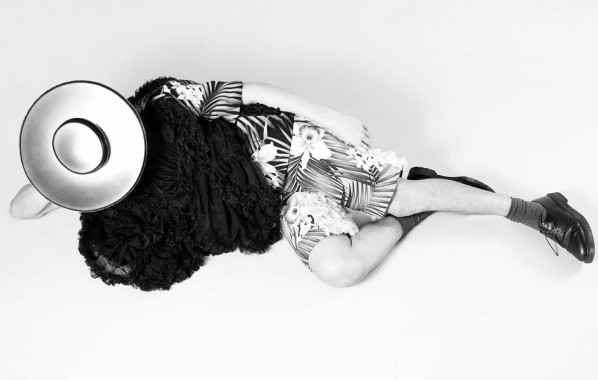
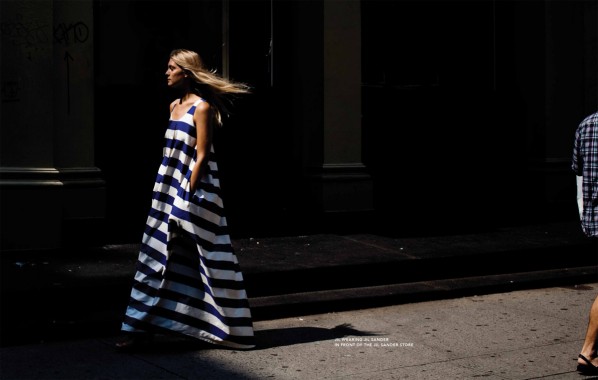
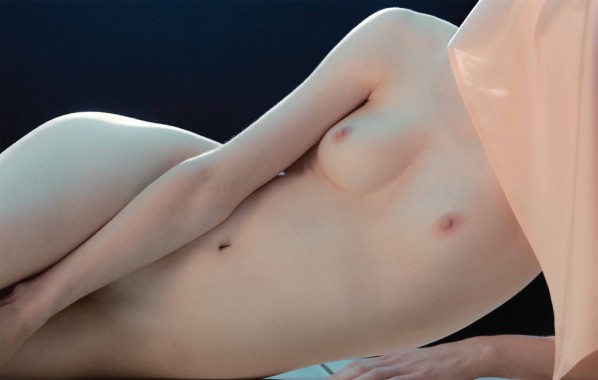
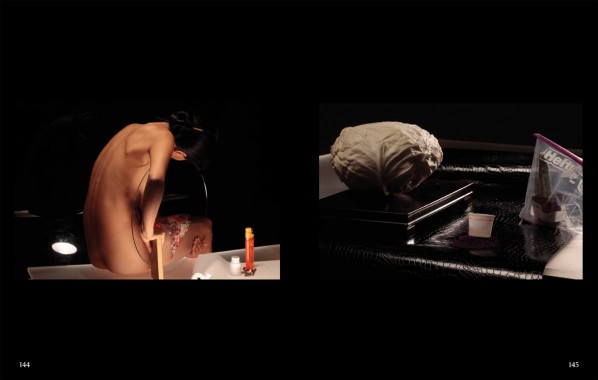
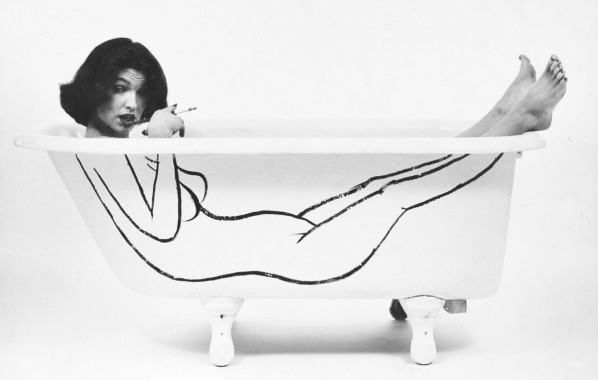
Aaron McElroy, Alfred Gescheidt, Anicka Yi, Anja Aronowsky Cronberg, Beni Bischof, Beverly Liang, Blommer Schumm, Capricious, Christina Moon, Culture, Distribution, Elizabeth Rock, Fashion, Haidee Findlay-Levin, Harvey Wang, Jennifer Livingston, Joff, Lauren Lancaster, LDC, Le Derrière Cri, Meinke Klein, Michael Rock, Nicholas Alan Cope, Qiu Yang, Ryan Weafer, Sol Sprezzatura
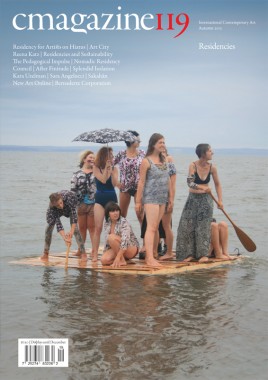
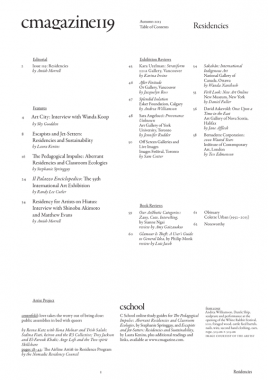
C Magazine 119, Residencies
Softcover, 64 pp., offset 4/1, 210 x 295 mm
Edition of 2200
ISSN 1480-5472
Published by C Magazine
$7.50 ·
Issue 119 includes feature essays by Laura Kenins on “Escapists and Jet-Setters: Residencies and Sustainability”, Stephanie Springgay on “The Pedagogical Impulse: Aberrant Residencies and Classroom Ecologies,” and Randy Lee Cutler on the 55th Venice Biennale, as well as Sky Goodden in conversation with Wanda Koop and an interview by Amish Morrell with Shinobu Akimoto and Matthew Evans. C119 also includes an artist project by the Nomadic Residency Council and the collaborative project “love takes the worry out of being close: public assemblies in bed with queers”; book reviews and reviews of exhibitions by Kara Uzelman, Sara Angelucci, David Askevold, Bernadette Corporation and more.
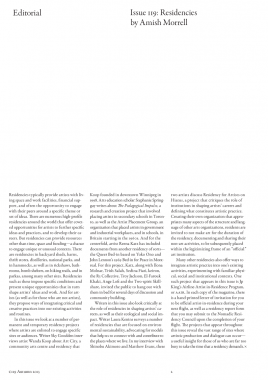
Amish Morrell, Art, Bernadette Corporation, C Magazine, Culture, David Askevold, Distribution, Fashion, Kara Uzelman, Laura Kenins, Matthew Evans, Randy Lee Cutler, Sara Angelucci, Shinobu Akimoto, Sky Goodden, Stephanie Springgay
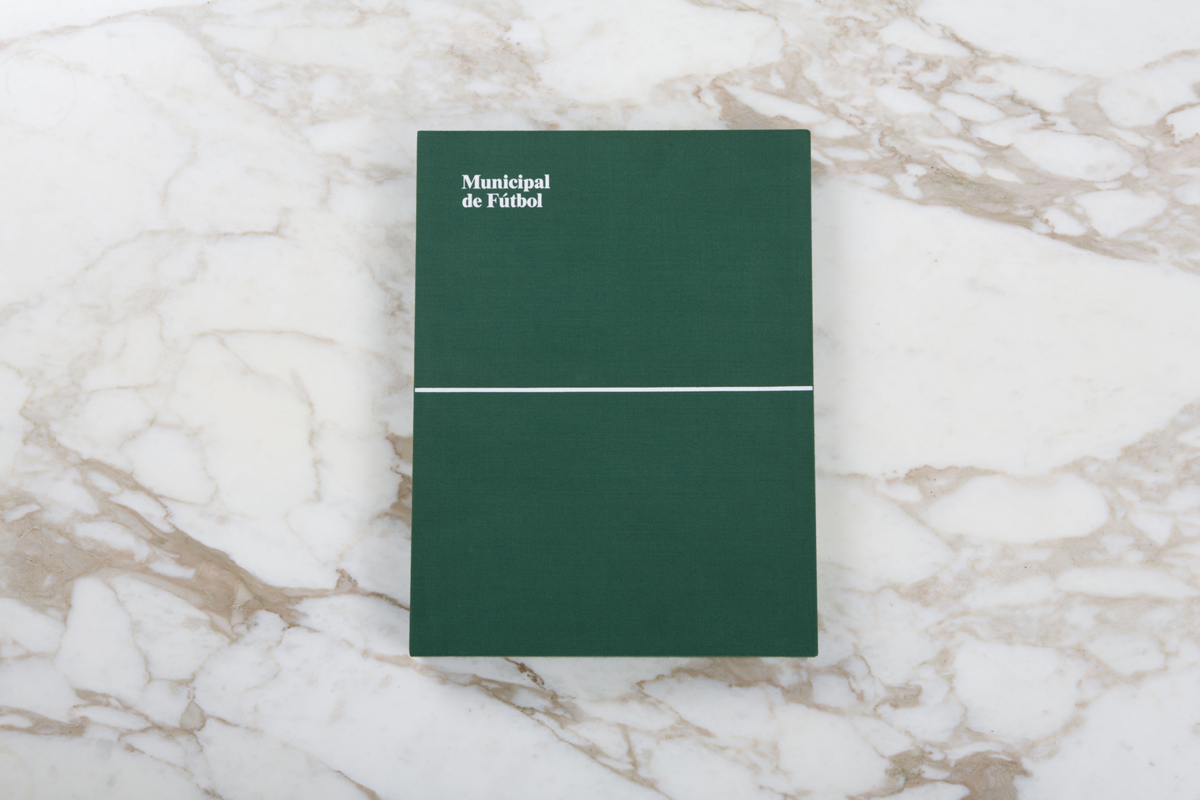
Essays by Jennifer Doyle. Photography by Michael Wells.
Municipal de Fútbol
Hardcover/boxed, 192 pp., offset 4/1, 260 x 350 x 40 mm
two books, one poster, nine artist lithographs, and a fútbol jersey, in cloth box
English and Spanish
Edition of 1000
ISBN 978-0-9816325-0-6
ISBN 978-0-9816325-1-3
ISBN 978-0-9816325-2-0
Published by Christoph Keller Editions, Textfield
$80.00 $40.00 ·
Distributed in North America by
Distributed Art Publishers
Municipal de Fútbol is a collaborative edition about amateur soccer in Los Angeles—the everyday experience of playing in pick-up games, weekend and night park leagues. Jennifer Doyle, a contributor to frieze and author of Sex Objects: Art and the Dialectics of Desire, has contributed two essays to the books, both with Spanish translation. Housed in an embossed green clothbound box with black ribbon pulls, the edition includes two clothbound books (one of which studies the game as it is played throughout Los Angeles, on hijacked baseball fields, back lots and public squares, and the other of which focuses on one field in particular, the ultra-scrappy and always animated Lafayette Park); one poster; artist lithographs by As-Found, Roderick Buchanan, Mari Eastman, General Idea, Jakob Kolding, Jonathan Monk, Arthur Ou, Peter Piller and Michael Wells; and a European National team adidas fútbol jersey with a “Municipal de Fútbol/Los Angeles Recreation and Parks” embroidered patch and a reflective silk-screened number. The edition is designed by Jonathan Maghen and photography is by Michael Wells.
“Fútbol bubbles up from the ground. It rains down on parks and leaks through walls. It rises like an irrepressible tide, and recedes only when everybody has to go earn some money for themselves and their families. Nobody playing here thinks it’s going to make them rich. Or famoso. It is what happens instead of work.” — Jennifer Doyle
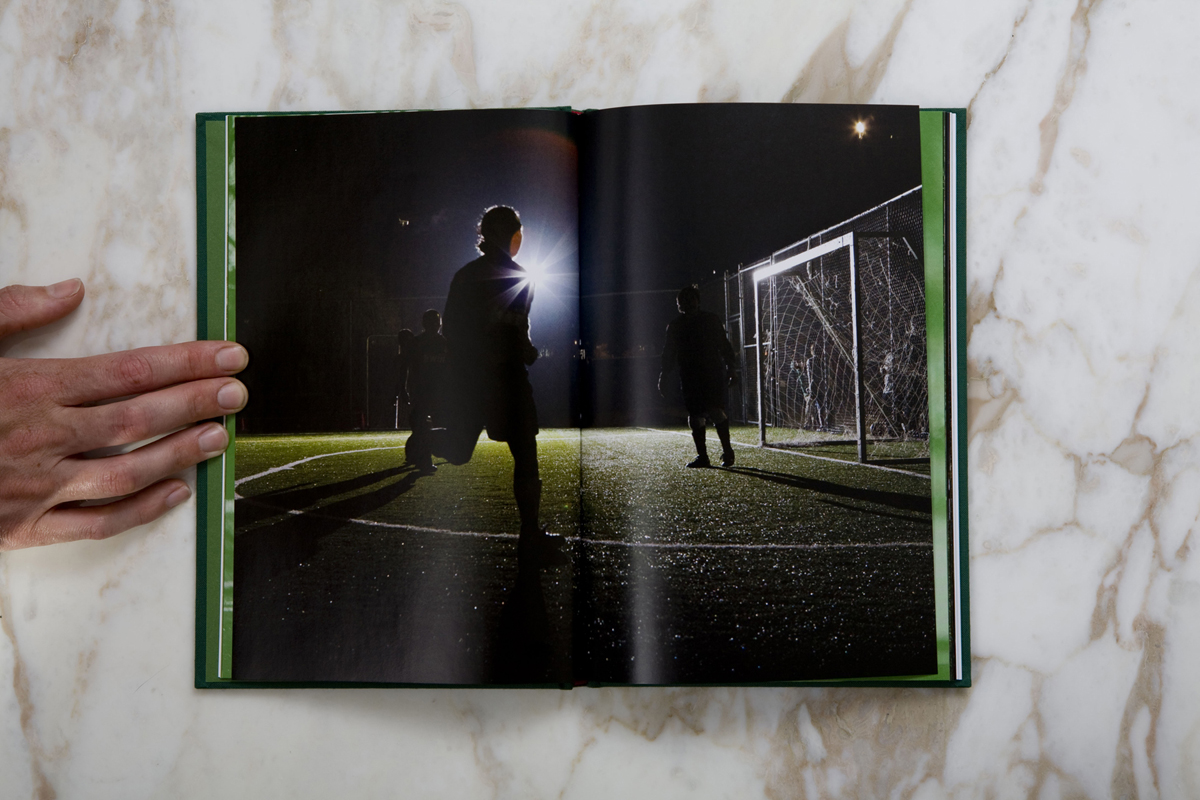
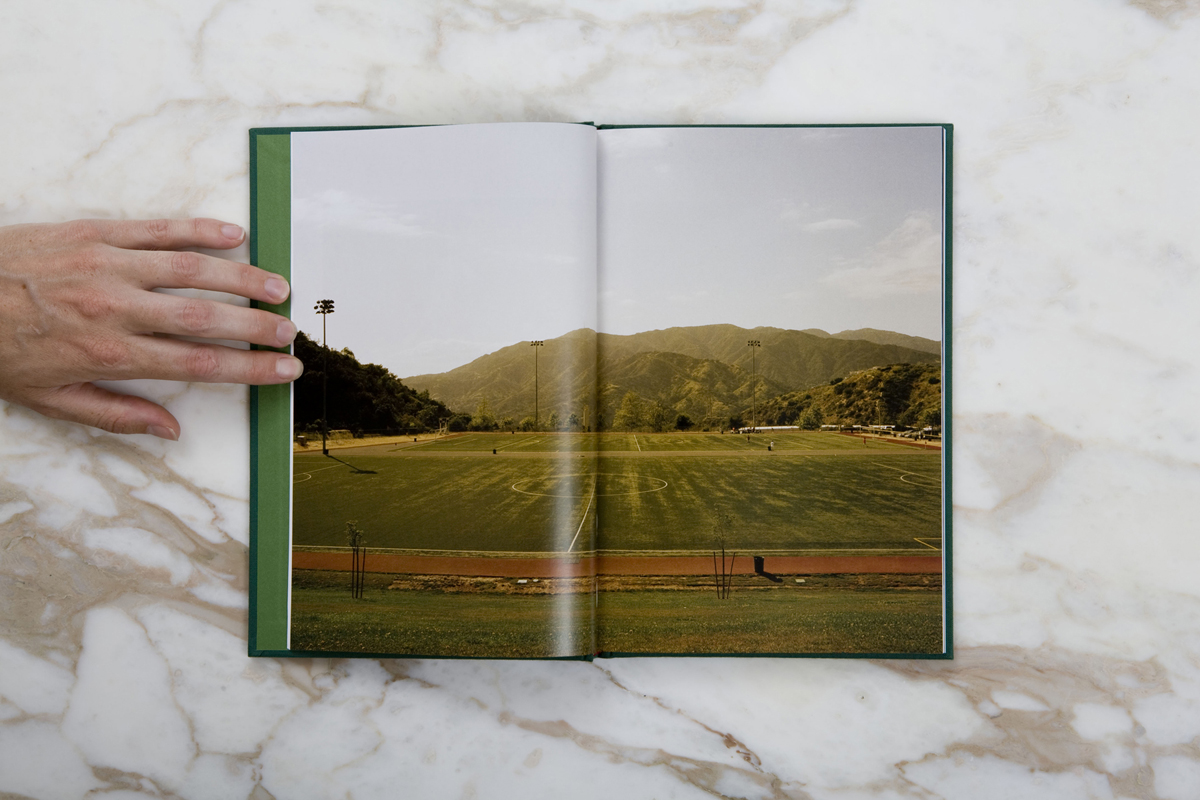
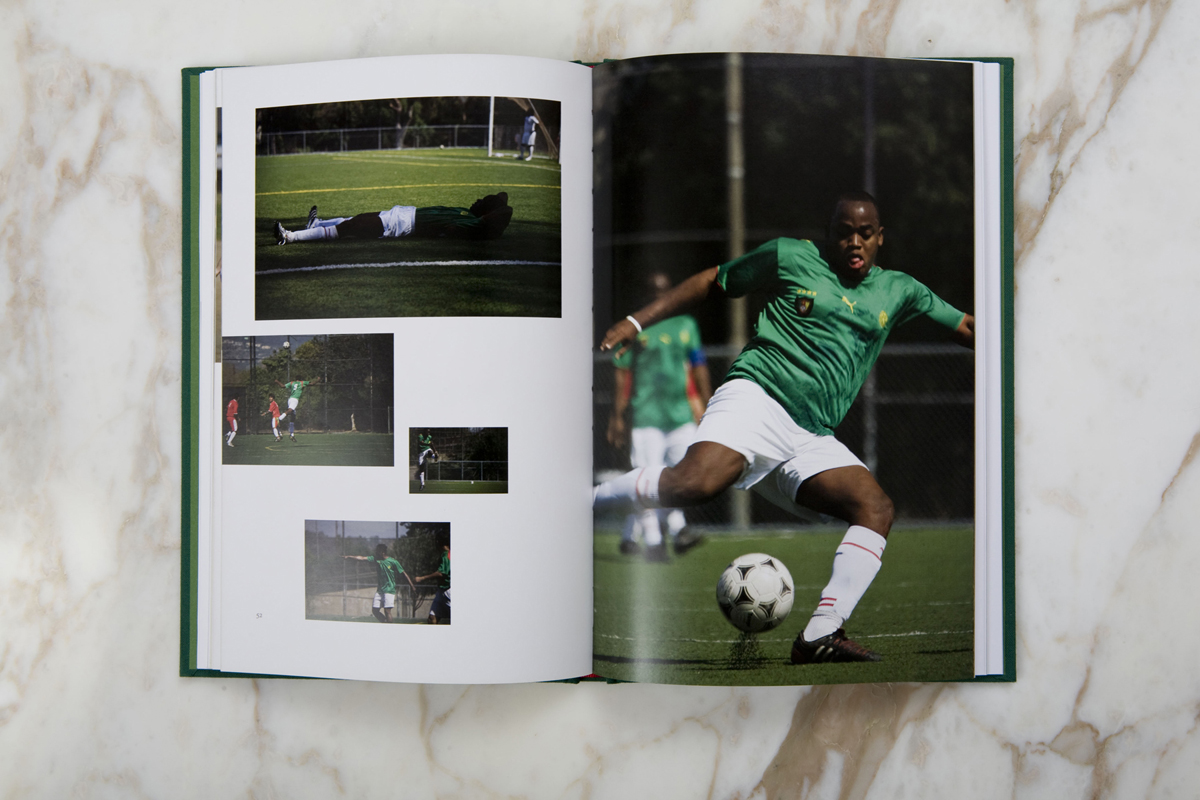
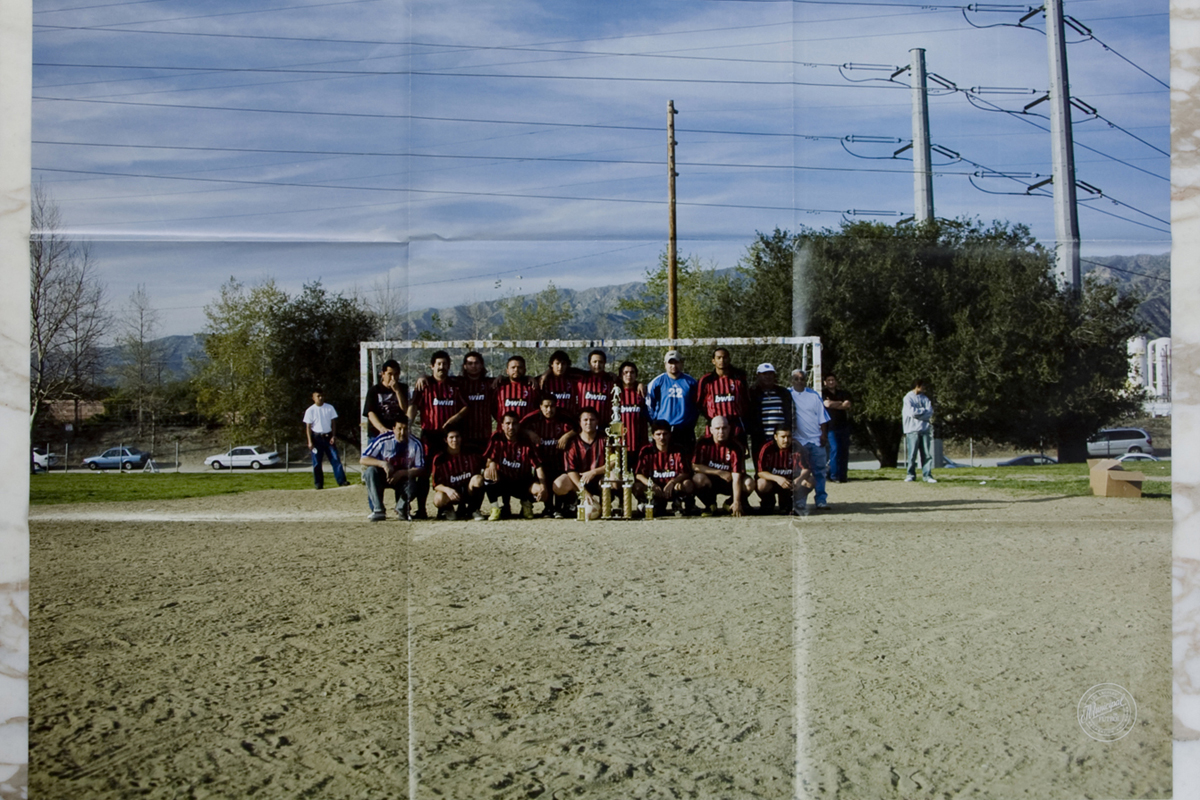
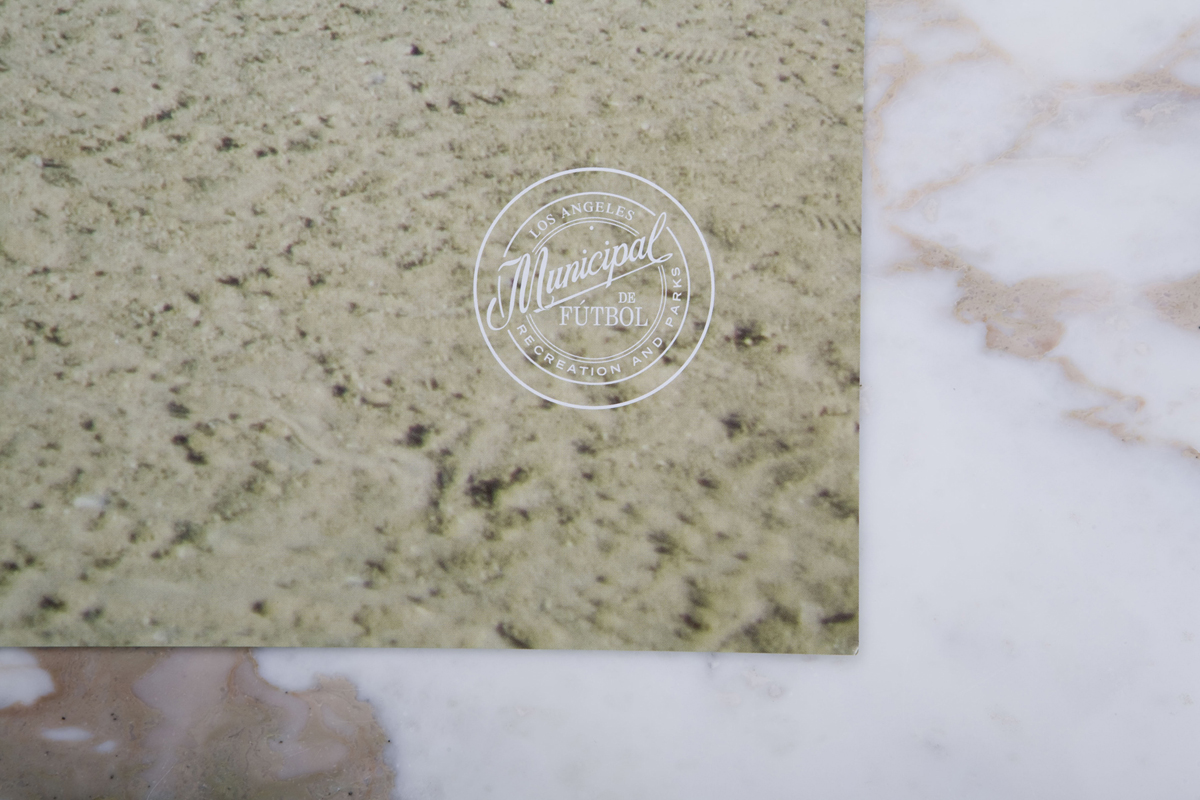
AA Bronson, Art, Arthur Ou, As-Found, Christoph Keller Editions, Criticism, Culture, DAP, Distribution, Fashion, General Idea, Jakob Kolding, Jennifer Doyle, Jonathan Maghen, Jonathan Monk, Mari Eastman, Michael Wells, Peter Piller, Roderick Buchanan, Sandy Yang, Sport, Textfield, Typography
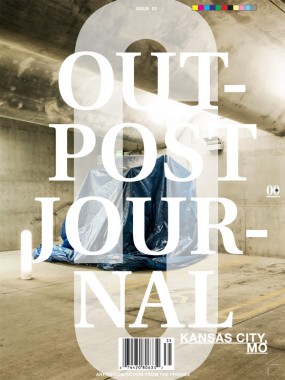
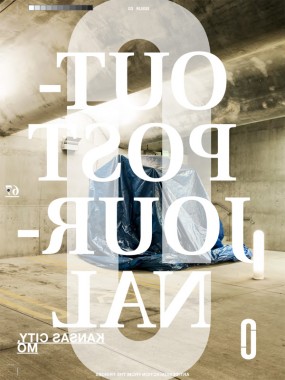
Outpost Journal 3, Kansas City
Softcover, 64 pp. + insert, offset 4/4, 9 x 12 inches
Edition of 500
ISBN 978-0-9836082-2-6
Published by Outpost Journal
$15.00 ·
Outpost is an annual print publication on art, design and community action from cities that have been traditionally underexposed beyond their local contexts. Each beautifully produced and visually engaging issue of Outpost focuses on a single urban location and comes packaged with a limited edition print by an artist from the featured city. Outpost is a journey into the creative heart of a place, and via features like “Secretly Famous” (profiles of the most infamous artsy locals), guerrilla engagements with tourist attractions, historical explorations, mapping projects, and deep dives into artist collectives and organizations, Outpost exposes the myriad ways in which unique local communities arise through creative collaboration and production.
Exploratory and playful, critical with a sense of levity, and inspired by hand-drawn maps, flags, totem poles, poorly pixelated iPhone photos, moody landscapes, and the spirit of adventure, Outpost is dedicated to strengthening ties between communities and spreading new ideas about how creative culture can change our world.
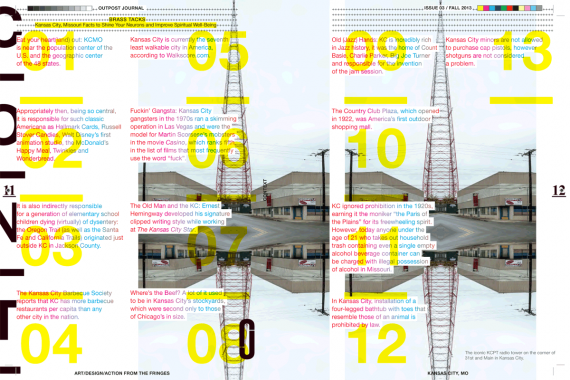
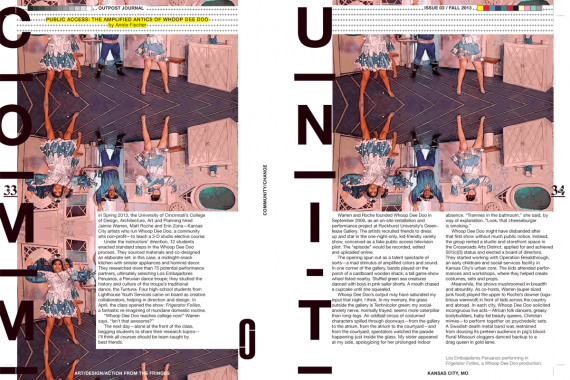
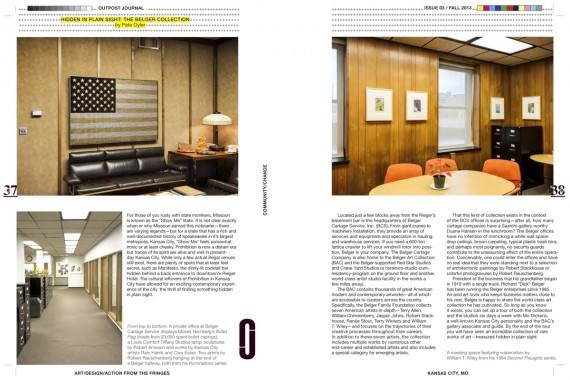
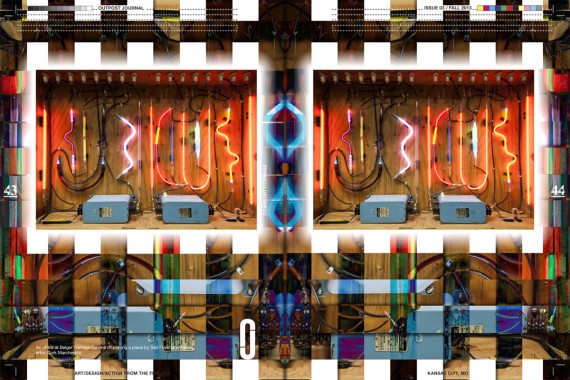
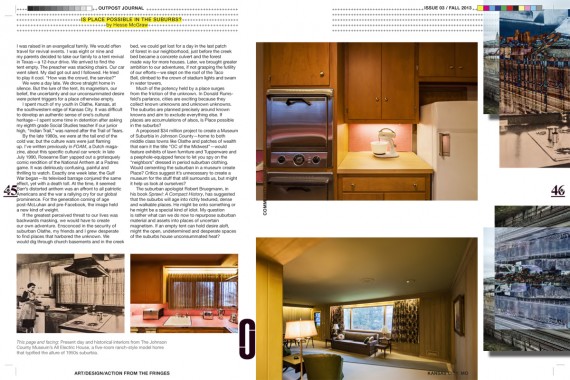
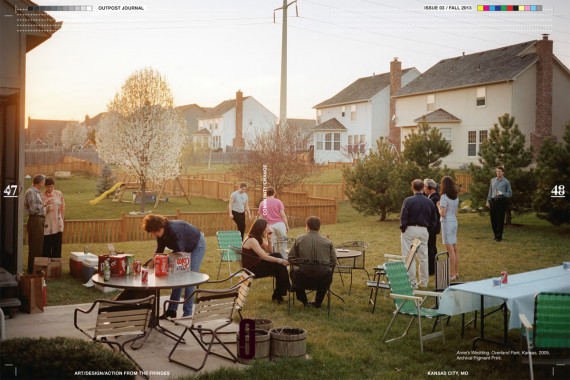
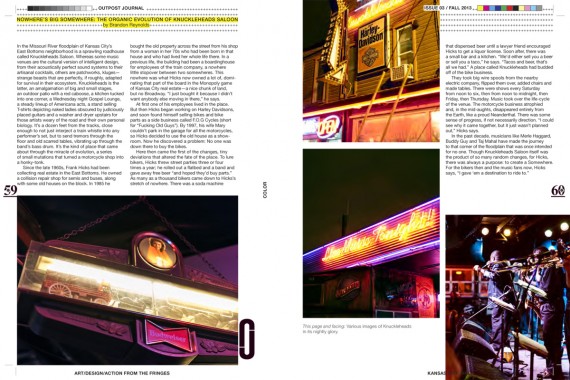
Ahram Park, Aja Blanc, Alex Kwartler, Annie Fischer, Anusha Venkataraman, Archie Scott Gobber, Architecture, Art, Brandon R. Reynolds, Clay Rockefeller, Culture, Dan Maginn, Distribution, Hesse McGraw, Jay Peter Salvas, Kate Hackman, Luke T. Baker, Manya Rubinstein, Matthew Williams, Mike Sinclair, Mike Taylor, Outpost Journal, Pete Oyler, Photography
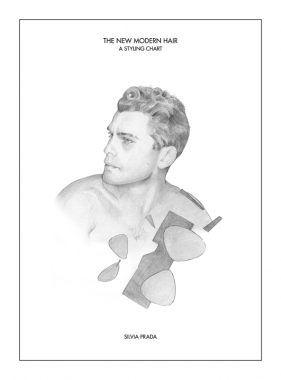
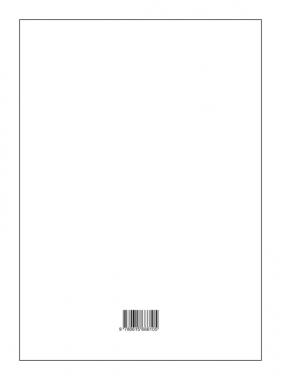
Silvia Prada, The New Modern Hair: A Styling Chart
Softcover, 32 pp., offset 1/1, 200 x 270 mm
Edition of 500, hand numbered
ISBN 978-0-615-66610-5
Published by cultureEDIT and Silvia Prada
$35.00 ·
THE NEW MODERN HAIR: A STYLING CHART features a series of stylized portraits highlighting male hairstyles juxtaposed with geometric drawings. The book pays homage to the barbershop and is an artistic representation of the subtle nuances and cues that help define the male persona, identity and representation within the parameters of visual and popular culture. Through this series of work, Prada is capturing the typecasting and idealized character building that has become ingrained in our minds through media, pop culture and iconography.
The portraits — with names ranging from The Flat Top to Executive Contour — feature commentary and meticulous instructions on how to obtain each look in order to resemble the lifestyle pictured. The geometric drawings, all whimsical remixes of 20th-century art movements such as Bauhaus, De Stijl and Russian Constructivism, highlight the emphasis on the shape for each hairstyle and command a manifesto for the references that each portrait points to.
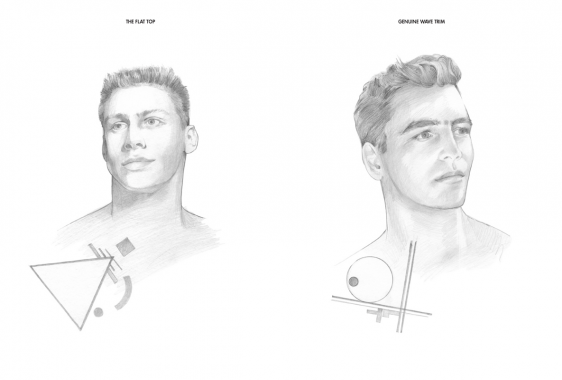
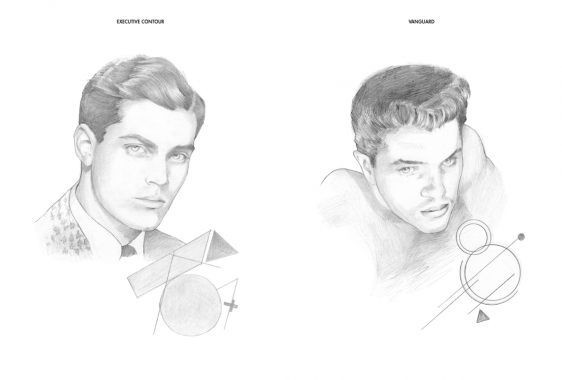
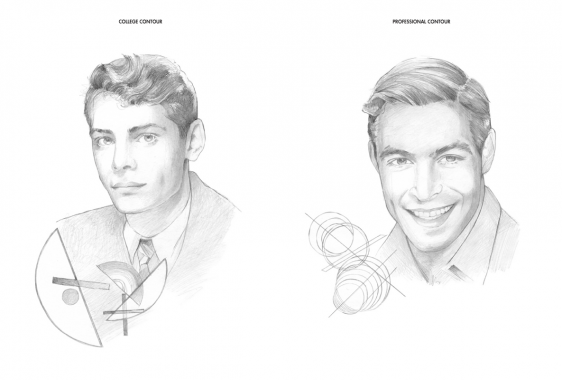
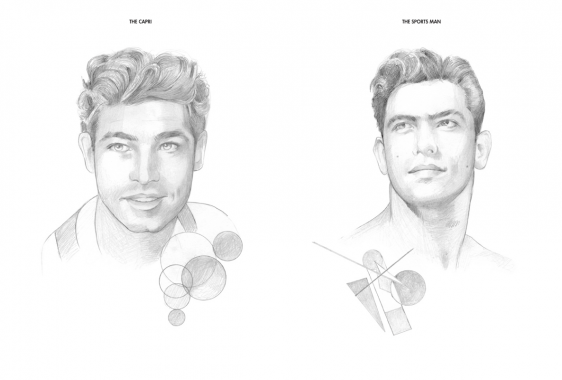
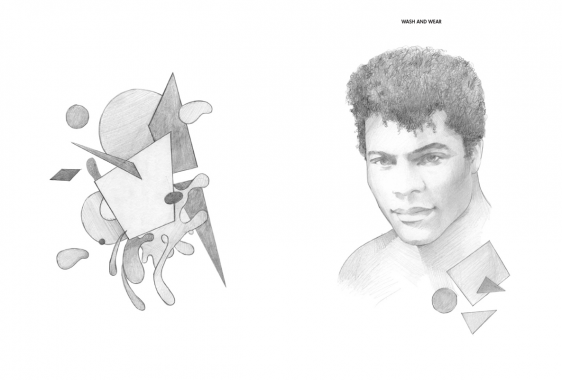
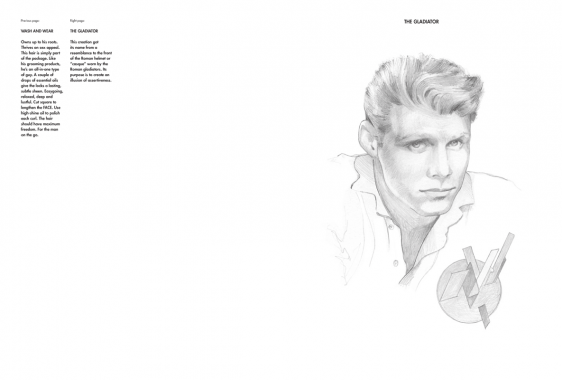
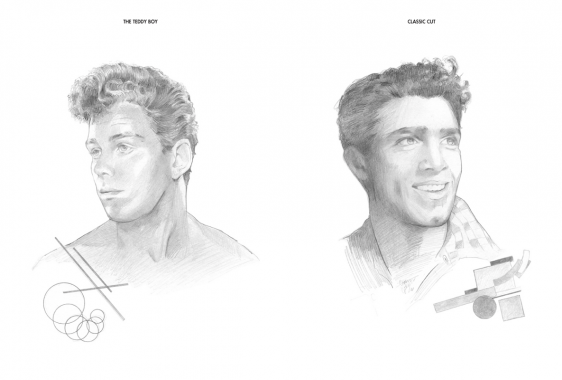
Art, Barbershop, CultureEDIT, Design, Distribution, Fashion, Holli Smith, Joakim Andreasson, Liza Kaplan, Michael Forrey, Miguel Figueroa, Setanta, Silvia Prada, Styling
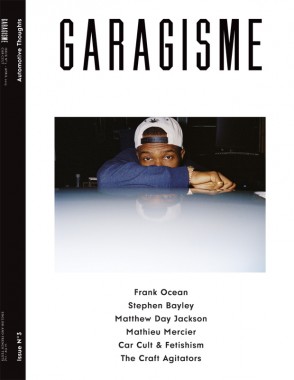
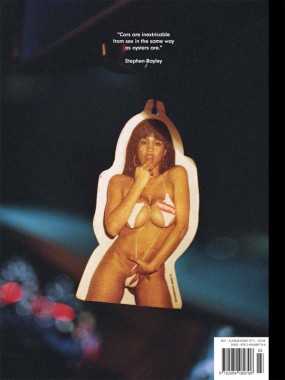
GARAGISME Magazine 3, Car Cult
Softcover, 144 pp., offset 4/4, 240 x 320 mm
English and French
Edition of 2000
ISBN 978-2-9540897-0-6
Published by GARAGISME Éditions
$13.00 ·
GARAGISME is a biannual publication documenting automobile culture / est une publication semestrielle documenter la culture automobile.
1. Frank Ocean: interview by CG Watkins
2. Stephen Bayley: Gender Bending Engines by Alice Pfeiffer
3. Matthew Day Jackson: The work of many hands by Monica Uszerowicz
4. Mathieu Mercier: Car Problems by Romaric Tisserand
5. Timothée Chaillou: Fragrance, a curated selection of artworks
6. The Craft Agitators: portraits of car crafters by Tania Feghali and CG Watkins
7. Il y a des morts élégantes: story by François Coquerel and Oscar Coop Phane
8. Art and Industry: essay by Rose-Marie Barrientos
9. Mégane: portfolio by Fanny Schlichter
10. Hellbenders: portfolio by Joan Cuenco
11. Concrete Island: portfolio by Devin Blair
12. Driving Me Crazy: portfolio by Csilla Klenyánszki
13. Don’t Walk: portfolio by Adrien Toubiana, Antoine Roux and Thomas Cristiani
14. Carhenge or the end of an american dream: essay by Camille Ayme
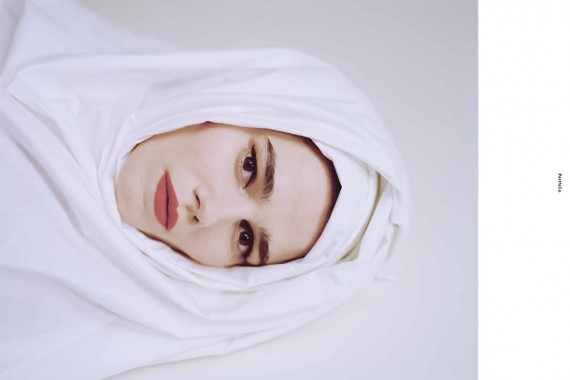
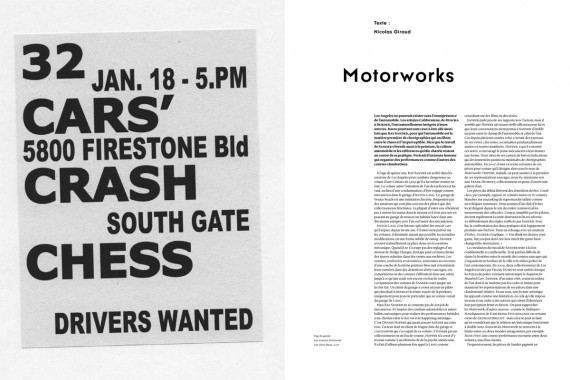
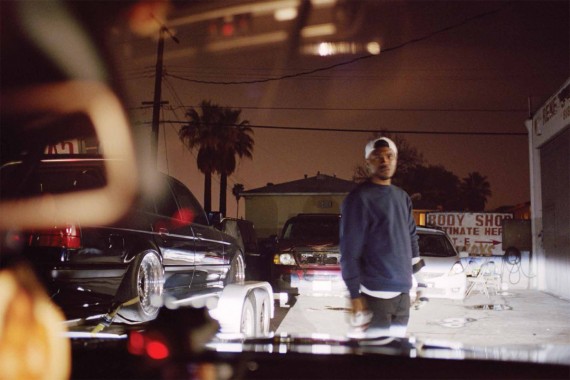
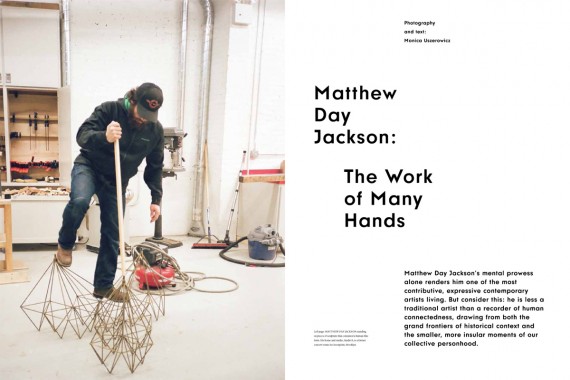
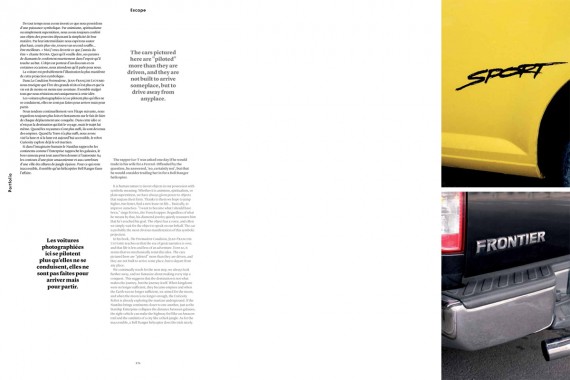
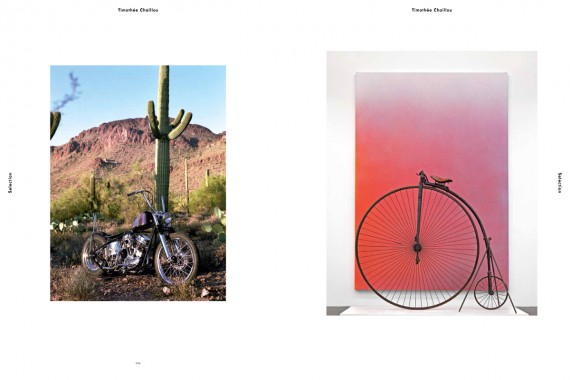
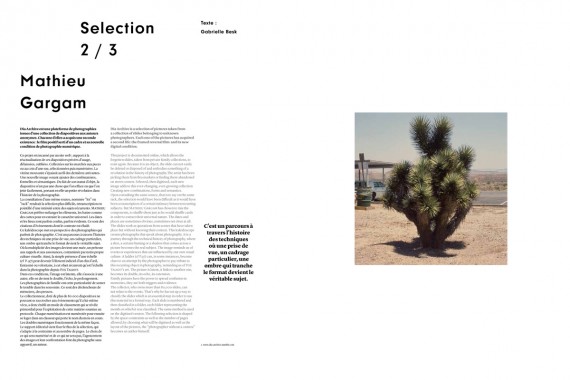
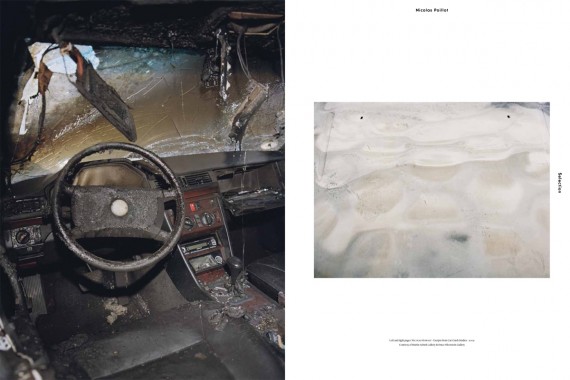
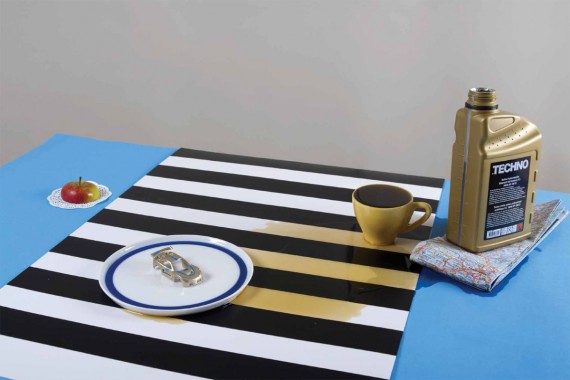
Adrien Toubiana, Alice Pfeiffer, Anne-Sophie Ferrari, Antoine Roux, Camille Ayme, Cars, CG Watkins, Csilla Klenyánszki, Culture, Devin Blair, Distribution, Fanny Schlichter, François Coquerel, Frank Ocean, Garage Grotesk, GARAGISME Éditions, Gilles Uzan, Joan Cuenco, Mathieu Mercier, Matthew Day Jackson, Monica Uszerowicz, Oscar Coop Phane, Romaric Tisserand, Rose-Marie Barrientos, Stephen Bayley, Tania Feghali, Thomas Cristiani, Timothée Chaillou
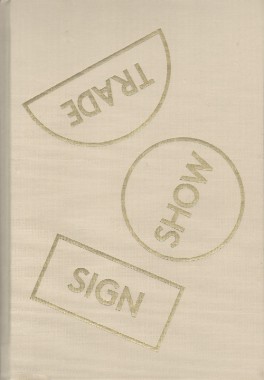
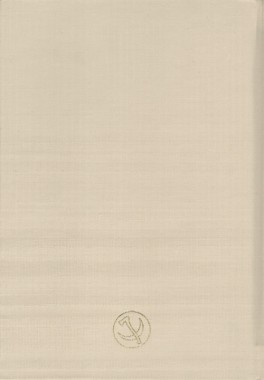
Thomas Macker, SIGN SHOW TRADE
Hardcover, 88 pp., offset 4/4, 180 x 265 mm
Edition of 500
ISBN 978-0-615-76630-0
Published by In The Pines Books
$45.00 ·
Conceptually, the publication is structured horizontally, with two formally similar series of photographic works bridged by photographs and sculptural objects that offer a dialogic counterpoint to the main series. The first group of photographs focuses around seed signs and sacks advertising distinct crop strains of genetically modified corn and soy. The individual sacks and signs are set up at the center of still life compositions, staged in the basement of Macker’s home in Jackson Hole, Wyoming. The sacks hang from the fiberglass insulation and wooden boards of the basement ceiling, while the signs are placed in gravel on the floor. The backdrops, often constructed by hanging used textiles against the gold-painted walls of the basement, offer glimpses of American nostalgia — old quilts featuring Winnie The Pooh, The Transformers, and Disney Princesses, along with faded floral sheets, tie-dye hangings, penguins. The series is presented as a calendar of images; each photograph is named for a month of the year, with an additional one for each season. The repetition in the photographs acts as a meditation on the ways we mark time, while the content of the images posits company branding as a primary signifier of cultural and personal identity: nostalgia and desire for meaning coopted by companies that alter the foundation of our sustenance.
In Macker’s work, the ‘seed’ — as altered commodity — locates the collision between the idea of the natural world as something outside and other than human, and the natural world as what we are (as animals who eat food grown from seeds, eat animals who have eaten plants grown from seeds, breathe air full of oxygen created by photosynthesis, and on and on). This space of collision and contradiction is where Macker argues we reside, and the photographic and sculptural pieces that bridge the two still life series in the exhibition offer a glimpse of the effects of that lived contradiction. Dog God | Man Camp | Big Piney, WY shows a coyote impaled by a pole and posed with its head up (as if howling), a scene Macker found and documented next to one of the “Man Camps” of trailers that have sprung up throughout the Gaslands of Wyoming, the Dakotas, Colorado and Iowa to house temporary gas line workers. Another shows the snow-filled landscape where Matthew Shephard was beaten and killed, the only marker of that moment of cultural mourning and instigator of progressive action now a gas company pole. Bumper stickers Macker stole from trucks in Wyoming and printed onto vintage glass tiles depict bikini-clad women alongside text that reads ‘Just Frack It’, and, a digitally rendered bust of a disembodied pregnant torso hangs next to a digitally rendered image of a Molatov cocktail. Reproduction, destruction, re-birth, identity, and verbal and physical languages of dominance comingle with cultural hope and yearning — a yearning that always seems to leave violence in its wake.
In the second still life series, the seed signs have been replaced by gas company signage. These signs, stolen by Macker during drives across the Gaslands, functioned as markers for the temporary roadways that crisscross the landscape where gas lines are in construction. In this series, the signs rest on top of a wooden crate instead of being placed in gravel, and the backdrop is now constructed of brown carpet. In front of the carpet, Macker has hung reproductions of 19th and 20th century artwork mythologizing woodcutters. Behind a Unit Drilling Company sign directing us towards Rig 24, we see Winslow Homer’s The Woodcutter, here featured on a living room wall as part of an interior design advertisement. In Der Holzfäller, Ferdinand Hodler, 1910, a Danger Benzene Cancer Hazard sign accompanied by a potted plant stands in front of Ferdinand Hodler’s Der Holzfäller. Co-opting these already-reproduced artworks, Macker highlights the historic glorification of human dominance over nature, as well as the problematic placement of the artist within this glorification, as a symbol and actor of these same problematic humanist ideals. The scenes are constructed to be visually satisfying, uncomfortable, humorous, claustrophobic, and unexpectedly personal, reflecting our continued desire to feel communal pride in our accomplishments, as well as the consequences of a system in which the structure for expansion we have created necessitates an unwillingness to recognize the fallibility or responsibility of power.
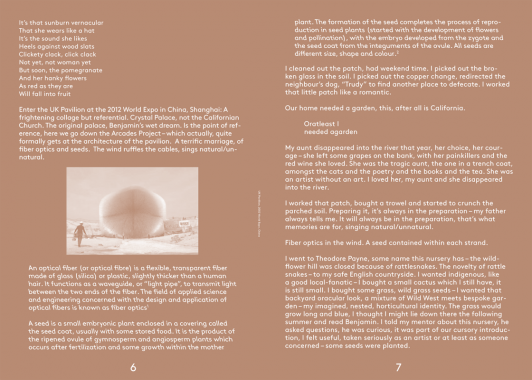
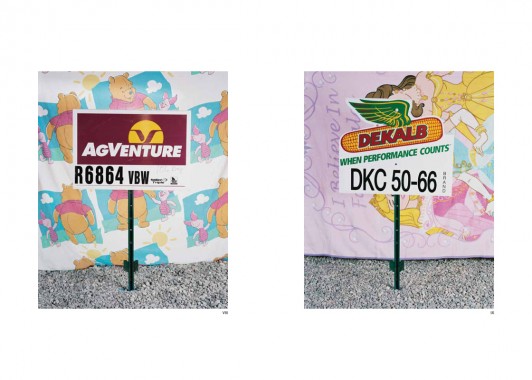
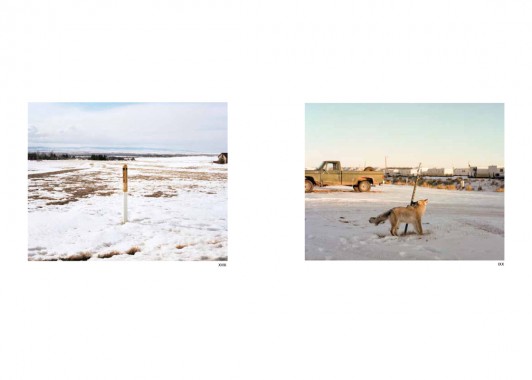
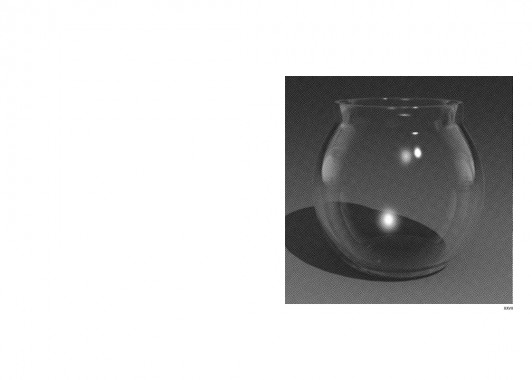
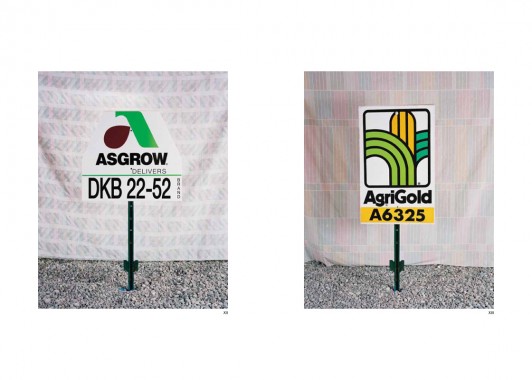
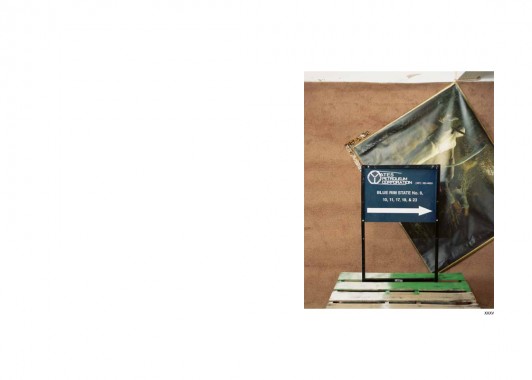
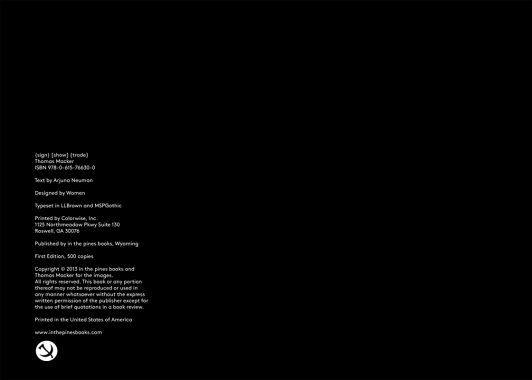
Agriculture, Art, Corn, Distribution, Ferdinand Hodler, Fracking, GMOs, Halliburton, In The Pines Books, Jackson Hole, LL Brown, Monsanto, Oil, Photography, Soy, Thomas Macker, Wyoming
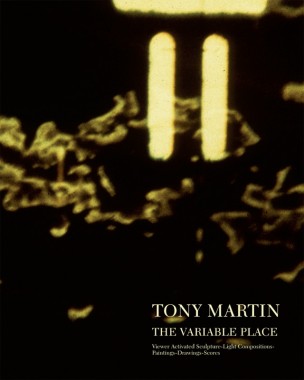
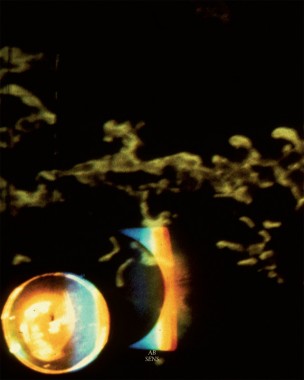
Tony Martin, The Variable Place
Edited by Camilla Padgitt-Coles and Nicky Mao
Softcover, 104 pp., offset 4/4, 8 x 10 inches
Edition of 350
Published by AB-SENS PRESS
$28.00 ·
Tony Martin arrived to San Francisco in 1962, promptly forging creative alliances and lifetime friendships with “new music” people Morton Subotnick, Pauline Oliveros, and Ramon Sender. When the San Francisco Tape Music Center moved to its location at 321 Divisadero St., Martin was invited by co-directors Sender and Subotnick to become the Visual Director. With special attention paid to working in the tape music medium, as well as performing regularly, they joined with Mills Center for Contemporary Music in ‘67. During the SFTMC days Martin was responsible for numerous visual compositions, including Terry Riley’s In C performance, as well as Sender’s Desert Ambulance. Martin was deeply engaged in experimenting with light via overhead and slide projectors, mixing paint, oil, water, and objects to build his light compositions. His following grew as a culture of psychedelia pervaded the 1960s and his light shows became popular amongst bands such as Jefferson Airplane and Grateful Dead. During this time he began to build “interactions” by engineering entire environments using sensors and mirrors. By the late ’60s he returned to New York City where he continued his focus for these types of installations; time and time again synthesizing his technological skills with painting as a moving image. A painter at heart, he continued with consideration of his experience working with his viewer-activated sculptures, as well as his devotion to the medium of light — maintaining a thread that binds all aspects of his work. His latest piece entitled Proximity Switched Installation (2012) is a clear culmination of a lifetime of experimentation/production. A video demonstration of this installation is available to view online and includes musical accompaniment by Compound Eye (Spring Press).
The Variable Place is the first book of its kind to tie together over 50 years of Tony Martin’s work. It includes an in-depth interview with Martin by Will Cameron, Albert Herter and the editors. As well as a special introduction by long-time friend/collaborator Pauline Oliveros.
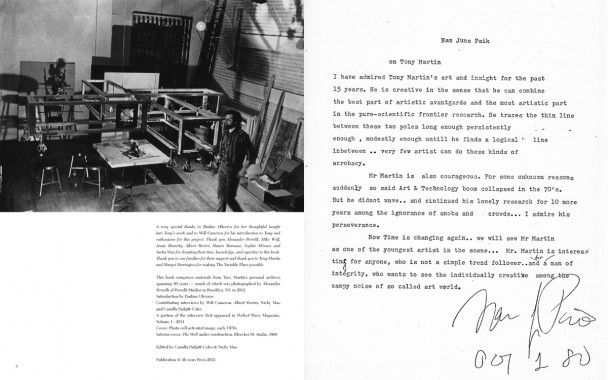
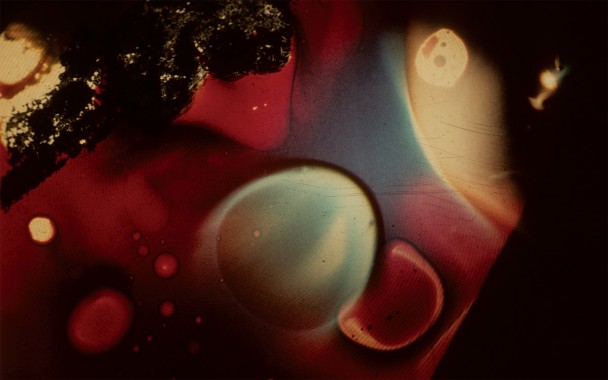
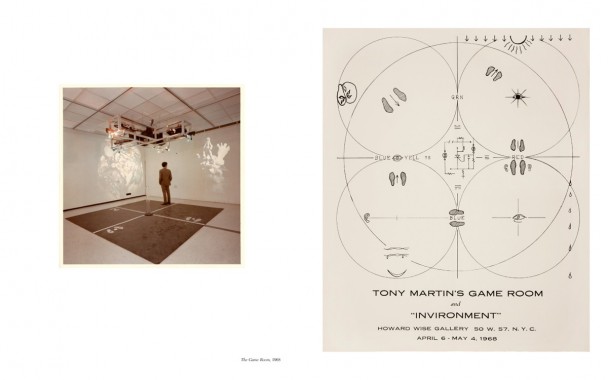
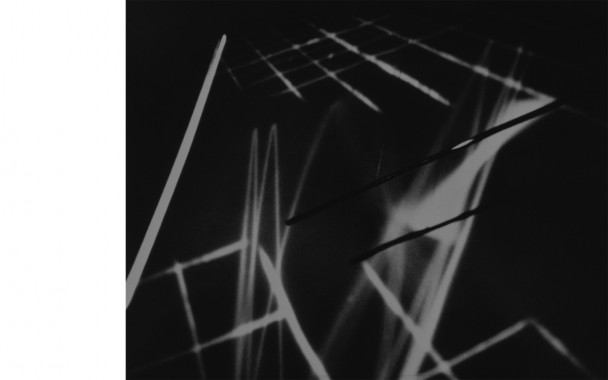
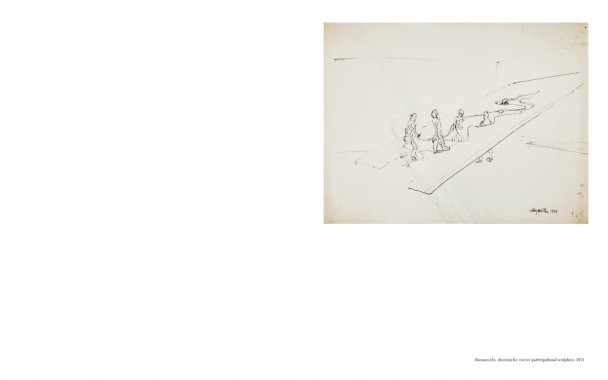
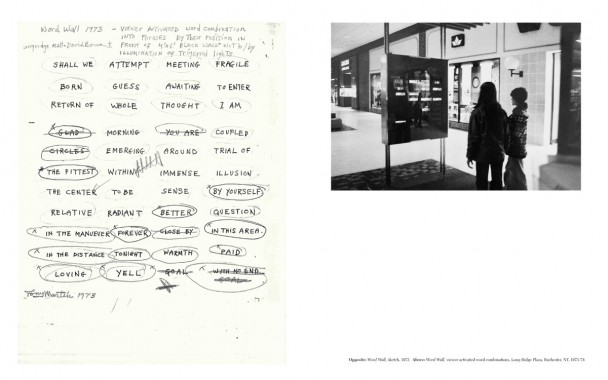
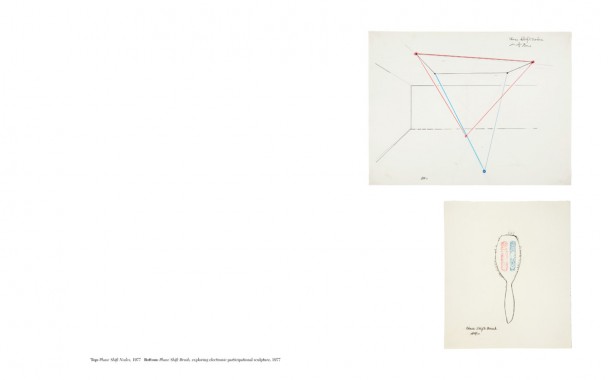
AB-SENS PRESS, Albert Herter, Art, Camilla Padgitt-Coles, Compound Eye, Culture, Design, Distribution, Morton Subotnick, Music, Nicky Mao, Pauline Oliveros, Performance, Photography, Ramon Sender, San Francisco, Terry Riley, Tony Martin, Will Cameron
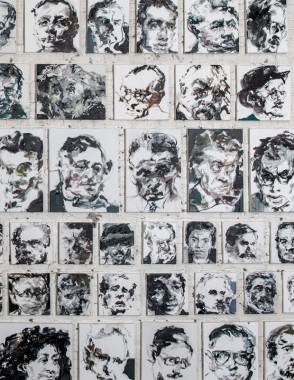
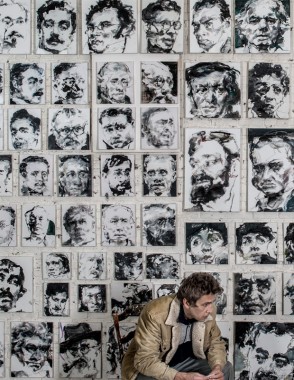
Sam Dillemans, Authors
Hardcover, 222 pp., offset 4/4, 250 x 325 mm
English and Dutch
Edition of 2000
ISBN 978-94-9069-399-2
Published by MER. Paper Kunsthalle
$52.00 ·
In the past years Sam Dillemans has painted some 300 portraits, mostly of influential writers, but also of scientists, composers and singers. In his typical dynamic and fluent style Dillemans completed the 300 portraits almost in one go. Most of the portraits are painted in black and white with smooth, volatile lines; others are touched up with some rare subtle brushstrokes in colour. Whether the subject is recognizable or not depends on the viewer and on how much the artists is prepared to divulge in his impressive paintings. On the occasion of the exhibition that opened on April 19th in the Castle of Gaasbeek, the paintings of the series Authors have been collected in the eponym book, which was published on the opening day of the exhibition by MER. Paper Kunsthalle.
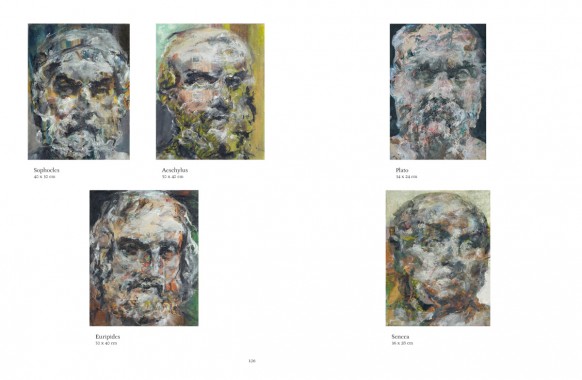
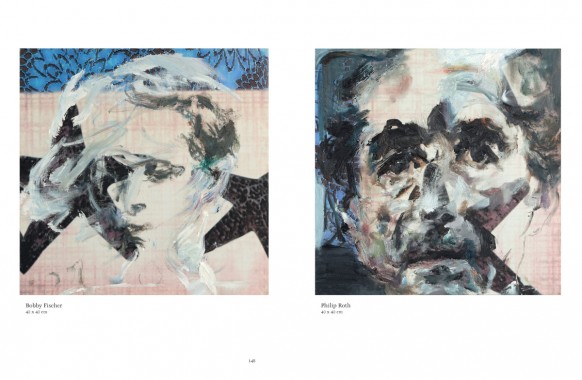
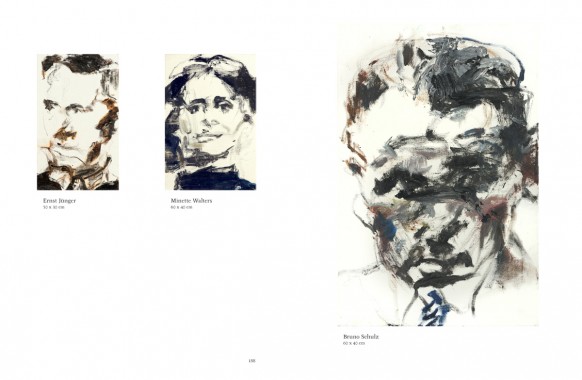
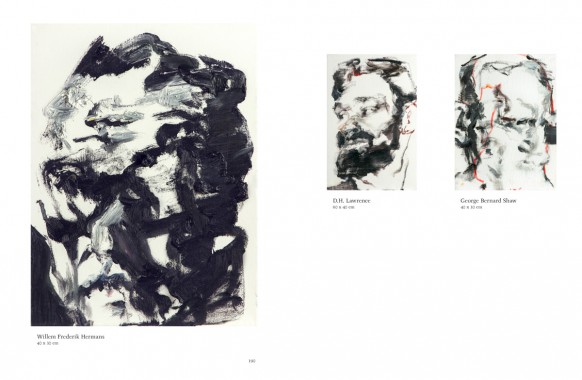
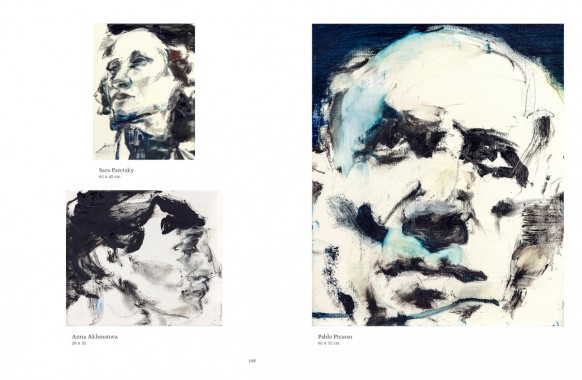
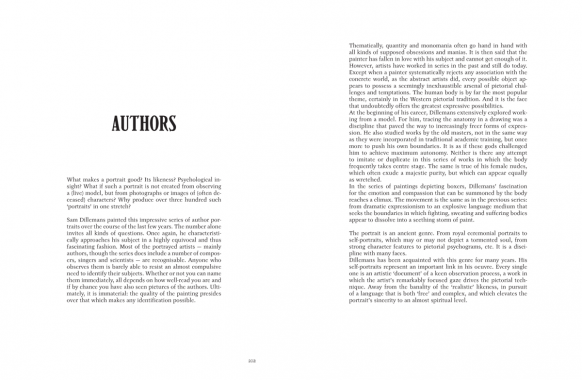
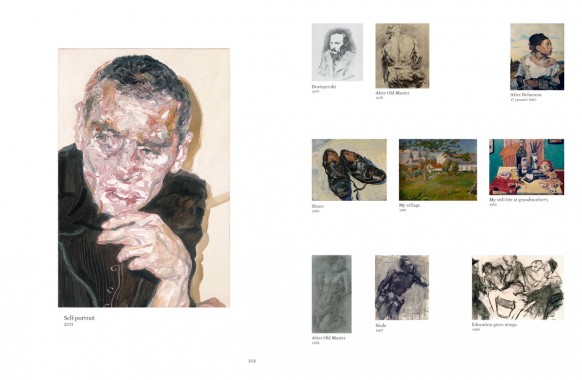
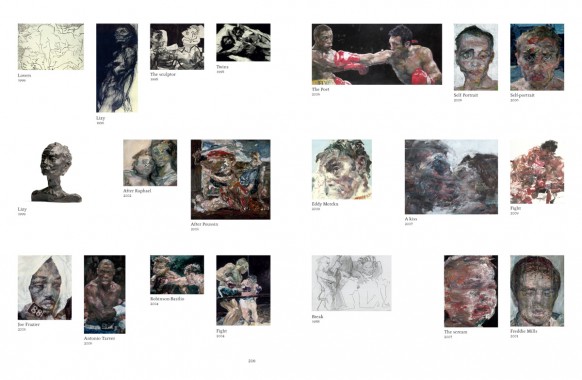
Art, Culture, Distribution, Duncan Brown, Luc Derycke, Luc Vanackere, MER. Paper Kunsthalle, Painting, Sam Dillemans, Wim van Eesbeek
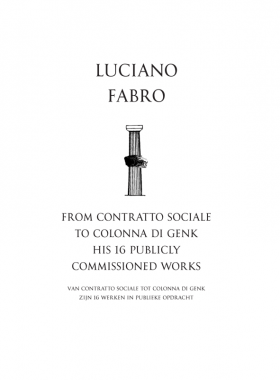
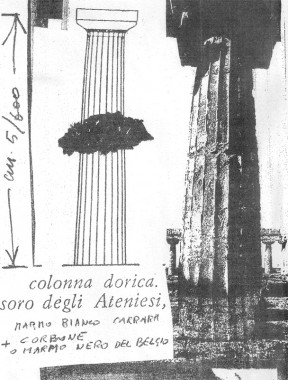
Luciano Fabro, From Contratto Sociale to Colonna di Genk
Hardcover, 56 pp. + DVD, offset 4/4, 170 x 220 mm
Edition of 800
ISBN 978-94-9069-362-6
Published by MER. Paper Kunsthalle
$32.00 ·
Between 1990 and 2007, Italian artist Luciano Fabro (1936-2007) created sixteen publicly commissioned works. This book, along with an accompanying dvd, focuses on the life and works of this extraordinary artist, and brings homage to Fabro’s latest realization La Colonna di Genk. This intriguing work commissioned by the city of Genk (B) visibly illustrates Fabro’s way of thinking and creation process. The accompanying dvd reveals biographical elements as well as the making of and the festive inauguration of La Colonna during Labour Day on May the 1st 2008. The inauguration took place on the renewed Genk Stadsplein (B), just ten months prior to Fabro’s death.
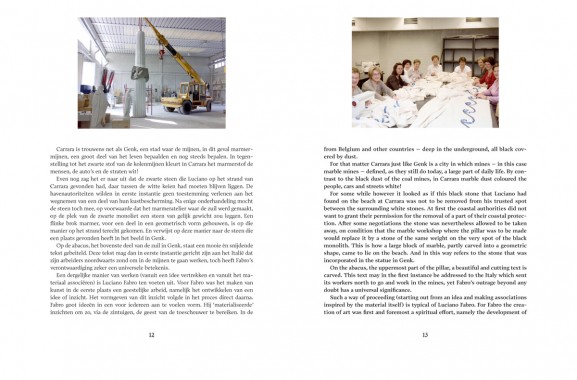
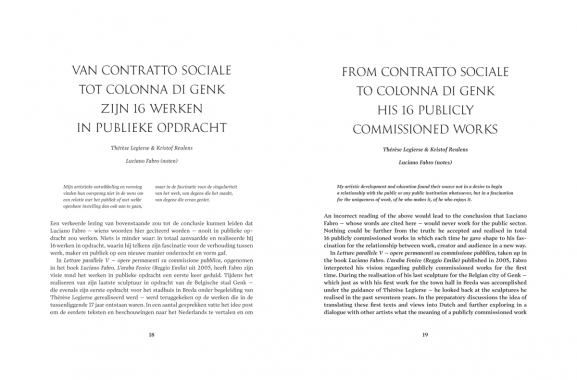
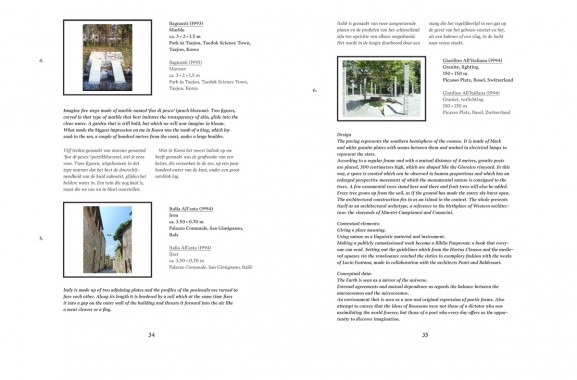
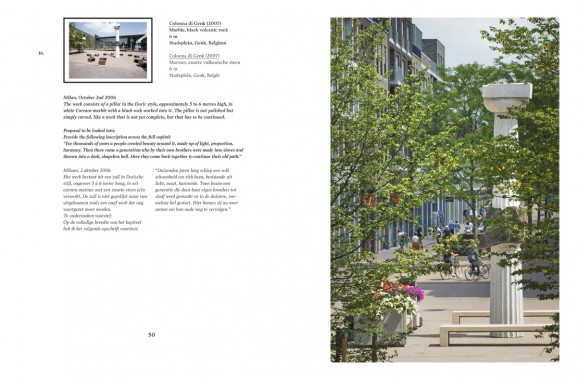
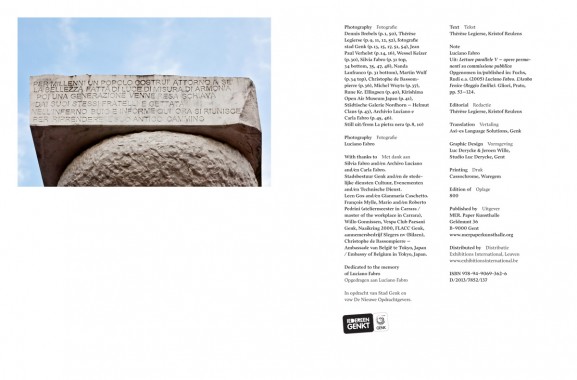
Architecture, Art, Distribution, Kristof Reulens, Luc Derycke, Luciano Fabro, MER. Paper Kunsthalle, Sculpture, Thérèse Legierse










































































































